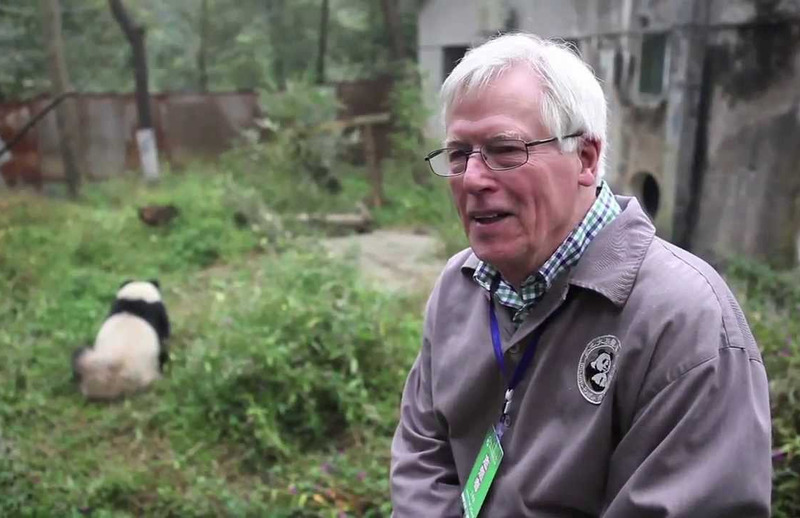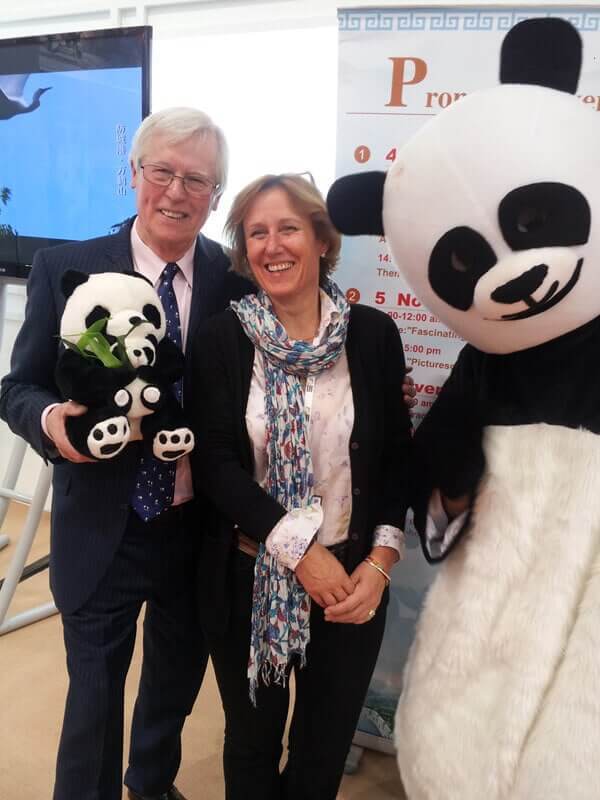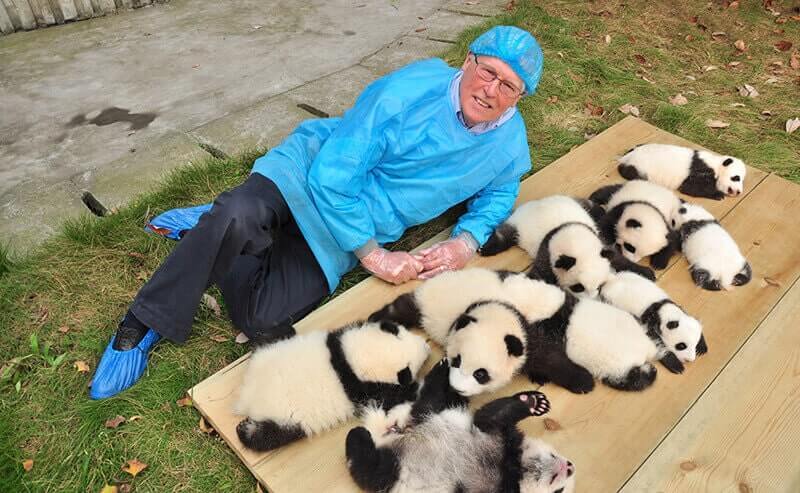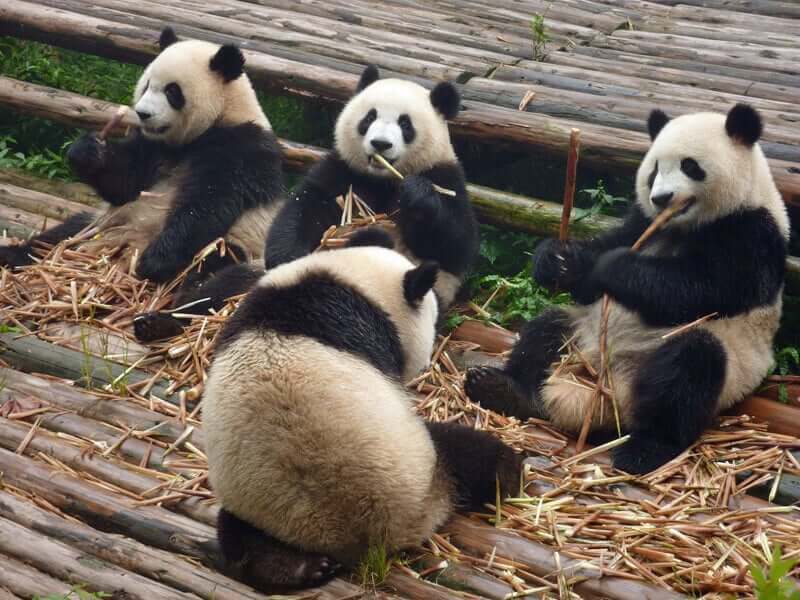 John Craven, broadcaster and presenter on Countryfile, Patron of SPANA and of course, famously, of Newsround, talks to Jennie Carr of the Silver Travel Show on The Wireless.
John Craven, broadcaster and presenter on Countryfile, Patron of SPANA and of course, famously, of Newsround, talks to Jennie Carr of the Silver Travel Show on The Wireless.
He has recently been appointed panda Ambassador to the province of Sichuan.
Are you the only Panda Ambassador in the world?
I think I probably am. I think it’s something new thought up by the Sichuan authorities. Everyone in the world is interested in what’s happening to Pandas in China. After all they are one of the most endangered creatures on earth, so maybe I’ve been appointed as an ambassador to represent the interest of giant pandas.
Were you were happy to accept? What do you have to do?
I shall find out in more detail. I have been to China several times, next year I intend to go for a longer period. I will be working with the conservationists at Chengdu at the breeding centre and taking parties of British tourists around to show them what’s happening there and also taking them up into the mountains about 2 hours drive away from Chengdu to the natural habitat of the pandas the bamboo forest, which is often covered in mist and rains 300 days a year. Up in the mountains there’s another research centre where the pandas are still captive but in their natural surroundings.
You first went to China in 1986 with Newsround, it must’ve been extraordinary, John, China was quite inaccessible then.
 Yes, it was just opening up to the West in those days. Mrs Thatcher had recently been to meet the Chinese leaders, I think she was one of the first Western leaders to go there, and it slowly started to open up. I was the first Western journalist to be allowed to film at the Panda Rescue Centre, as it was then, at Wolong, up in the mountains in Sichuan province. We went with a camera team and made two half hour long programmes.
Yes, it was just opening up to the West in those days. Mrs Thatcher had recently been to meet the Chinese leaders, I think she was one of the first Western leaders to go there, and it slowly started to open up. I was the first Western journalist to be allowed to film at the Panda Rescue Centre, as it was then, at Wolong, up in the mountains in Sichuan province. We went with a camera team and made two half hour long programmes.
What was happening in those days was that they hadn’t actually successfully bred any pandas in captivity, the numbers were getting very low at about only 1,600 left in the wild and there had been a disaster – all the bamboo died. Every few years, it flowers, then it dies off, which is disastrous news for pandas. Bamboo is 98% of what they eat, it is a bit stupid, as they are carnivores and have the stomach of carnivores, bamboo actually holds little nutrition for them. So they spend most of the day eating, then they sleep to conserve energy. So when the bamboo dies, as it did in the Wenchuan area in the mid 1980s, many pandas, perhaps over 80, starved to death. Some were rescued and brought to the new centre. In 1991, the first baby panda was born in captivity, and that’s the start of what’s becoming quite a success story. Prince Philip was there as President of the World Wildlife Fund, which works closely with the Chinese panda authorities. Unfortunately, that first panda died after a year. However, they are now becoming much more successful with the breeding programme.
What was it like for you when you first saw a Giant Panda?
It was a fantastic experience as Newsround had been going for about 15 years then, and we’d used the Giant Panda as the symbol of the importance of conservation and protection of endangered species. We had so many panda stories on Newsround. I’ve almost forgotten how many there were, however it was a very good way of telling the children of Britain how important it was to care about nature conservation. When I had the opportunity to go to China, it was great. I’d seen Giant pandas in London Zoo in captivity, but I’d never seen them in their natural habitat.
It was amazing, the ones at Wolong were recovering as they had been well-fed since they were found in a state of starvation, they were looking quite happy, and we could get quite close to them. However, they’re quite aggressive creatures, growling and hitting out, so I won’t like to be hit by one of those enormously strong arms of a panda.
 The base at Chengdu started a couple of years later with pandas rescued from the wild. Now they have well over a hundred pandas and this year they had 20 babies, which is a huge success. Up in the mountains, the centre has had 14 babies. I was there a couple of weeks ago and had the privilege of being allowed to get up close to nine little babies, fifty days old. They are so cute, so appealing, and I was actually allowed to touch them, with full operating theatre kit on. They’re now my charges, I feel responsible for them. I’m their ambassador.
The base at Chengdu started a couple of years later with pandas rescued from the wild. Now they have well over a hundred pandas and this year they had 20 babies, which is a huge success. Up in the mountains, the centre has had 14 babies. I was there a couple of weeks ago and had the privilege of being allowed to get up close to nine little babies, fifty days old. They are so cute, so appealing, and I was actually allowed to touch them, with full operating theatre kit on. They’re now my charges, I feel responsible for them. I’m their ambassador.
They were less than a foot long, just weighing a few ounces.
When the babies are firstborn, they are a few centimetres long and without fur. They have to crawl up the Mum’s tummy to reach the teat, but some don’t make it. Giant Pandas are not very good Mums naturally and have great problems reproducing anyway. Most in captivity are artificially inseminated and the experts at Chengdu are learning much more about whole reproductive system of Pandas which is why there’s far more success with live births now.
Quite often the Mums give birth to twins and if the firstborn is doing ok, the Mum will just ignore the second one, so out in the wild it would just die. So what happens at the research bases is that they take one of the tiny babies away and bottle-feed it in nursery, leaving the other one with Mum. After a few days, they rub down the baby in nursery with the smell of Mum then swop with the other one, and this how it goes every few days. And in that way they both survive.
Given that the pandas are doing well, and the breeding programme is going well, will they ever be released back into the wild?
That’s the plan, maybe even some born this year might be released. They are constructing a huge, huge enclosure, which the first ones will be released into, and they will be left to fend for themselves. It’s as near as can be to the wild as possible. And eventually the hope is that they will be able to introduce many pandas to the ‘real’ wild. The trouble is that their natural habitat is becoming smaller all the time. The human population of China is enormous, with about 1.5 billion people, who need more land on which to live and to work. Trees are chopped down for fire wood, with more and more humans are encroaching into panda country. The pandas are being forced higher and higher up the mountains and that, coupled with bamboo dying off, is why they need our support. Nature is being a bit cruel to pandas.
When a visitor goes to the Chengdu Research Base at Axe Hill, which is on the World Heritage List, can visitors interact with pandas?
 For an extra charge you can be a volunteer, spend time mucking out the cages, propping up bamboo into the enclosures, so pandas can take it down. It’s not just left on the floor, you stick the long branches of it into the floor, so they can come and help themselves to it. When you muck out, you have to remove the panda poo, and you realise that most of the bamboo they’ve eaten has gone through undigested. They really are wasting time eating food that has not given them much energy.
For an extra charge you can be a volunteer, spend time mucking out the cages, propping up bamboo into the enclosures, so pandas can take it down. It’s not just left on the floor, you stick the long branches of it into the floor, so they can come and help themselves to it. When you muck out, you have to remove the panda poo, and you realise that most of the bamboo they’ve eaten has gone through undigested. They really are wasting time eating food that has not given them much energy.
It is a fascinating thing to do: to be a volunteer for a while. And as you wander round, it’s up to pandas whether they come up to you or not. There are great moats around some of the enclosures, so the pandas can’t get out. When I was there just recently, there were four pandas aged about three, so young teenagers, fighting each other, knocking each other about and pushing each other down the slope into the moat. It was very funny to watch, it attracted huge crowds who were really enjoying watching them in action.
Why do you think Giant Pandas have captured the world’s imagination?
It’s because they are so appealing, their marking is wonderful, they sit up to eat, holding bamboo in their reticulated fingers, which is, in a way, almost human. The Chinese word for panda is white cat bear, as they think pandas have cat like faces. I don’t quite see that myself. They are certainly the most appealing of all the big bears. In particular the cubs, once they’ve got their markings, and they are still a bit helpless. I was watching a few three-month-old cubs trying to stand up, and they slither all over the place as they try for the first steps, and you’re willing them on, to get on their paws and get going. They are amazing creatures, and it would be such a tragedy for nature conservation if they were allowed to disappear.











